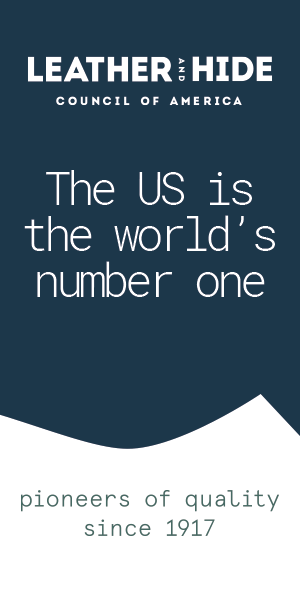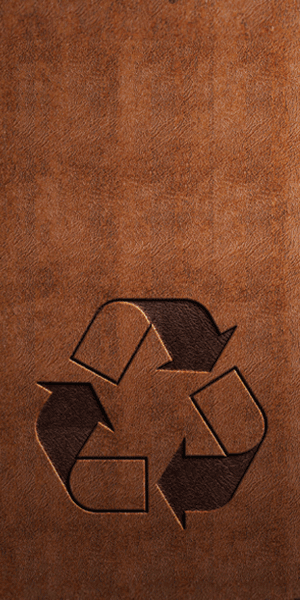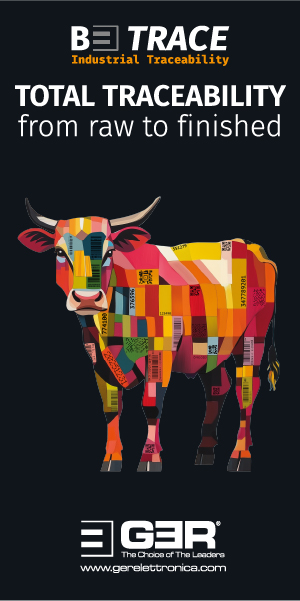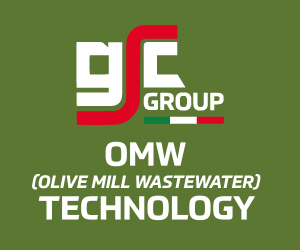Self-help: Dr Kerry Senior

The secretary of the International Council of Tanners (ICT), Dr Kerry Senior, makes it clear that the industry needs to keep driving the changes that will improve leather’s standing in the eyes of brands, consumers and legislative bodies.
What are the pros and cons of the global leather industry being so geographically disparate?
If there is a pro, it is that there is leather and leather supply for all occasions, with a huge range of products and price points. In very general terms, Europe will be characterised by high operating costs, intense regulation and a market that demands high quality and can afford high quality. We can contrast this with other parts of the world where, again in very broad terms, the industry is characterised by abundant, low-cost labour, low operating costs, arguably lower standards and lower enforcement of regulation. There is sometimes a pile-them-high, sell-them-cheap business model, which works, whereas in Europe, you find a high-quality, high-price model. Both models work for the markets they serve and it would be difficult for either of them to prosper in each other’s market. The European industry would not work in many parts of the world because it cannot afford to; it cannot bring its leather down to those price-points. On the other hand, players in other markets may not be able to hit the standards required in Europe. What this means is that leather is not limited to luxury products and everyone can afford to have something made of leather. You would expect, because of this, that there would be no wastage of raw material, but we know that’s not the case.
And the downside?
The downside is the hierarchy this creates. If you look at any industry in the global south, it is dominated by large buyers driving prices to a minimum, leaving suppliers without enough margin to do the things they need to be doing to be good global citizens. This traps companies in a situation in which they are stuck with high-volume, low-value, minimal-effort processing and you end up with a two-speed industry. We see the effect of this in places like Bangladesh where, after years of procrastination by the authorities, tanners are taking the lead on developing effluent treatment systems that will help them to reach the standards required to sell their leather in markets like Europe. This is not unique to leather; it is a general problem in these regions. This impacts on the perception of leather. For example, the makers of documentaries such as ‘Slay’ can choose to go to poor-performing areas and say: “This is the leather industry.” What they show is shocking and no one could endorse it or present it as an example of what we want to be doing. Equally, it is not in any way representative of the global leather industry. But the reason it happens is not innate to the leather industry; it is innate to globalisation. And it becomes even more important when you start to talk about places like Africa, where there are more issues. Specific countries there are doing quite well, but the lack of organisation across the continent means there is even more waste of raw material and it’s even harder to hit standards. There is an opportunity there: with the labour and raw material available, the leather industry could thrive. But it’s not being allowed to develop because we have this two-speed globalised system.
What are the pros and cons of the industry comprising a number of important segments (automotive, footwear, leathergoods, furniture and others), each with its own dynamic?
It is a good thing that consumers are able to see leather in multiple applications and that there are multiple destinations for different types of raw material. This supports jobs, GDP growth and cultural heritage. Leather is so flexible it can reach every part of your life. On the other hand, as a result of this, leather has become commonplace, unremarkable and misunderstood, which leaves it open to attack. Consumers take it for granted. Then, when new materials come along, people see them as exciting and they forget how good leather is. The perceived environmental issues for leather also has an impact, turning some brands and consumers away. There is a lot of work for us to do to reimagine leather. For example, it’s rare for people to wear leather clothing now. Why is that? Cost is an issue but I suspect it’s because clothing manufacturers think you can’t finish leather in the interesting ways you can finish synthetics. They think leather is too heavy, that you can’t get leather wet, that it’s difficult to clean because you can’t just throw it in the washing machine. But it does not have to be this way. Modern chemistry means there are better ways to make leather now, and opportunities to explore new varieties of leathers with functional aspects that we haven’t thought about before. We can reinvigorate the way in which people think about leather.
The Food and Agriculture Organisation (FAO) estimates global cattle slaughter at around 330 million head per year. What are current ICT estimates for the proportion of hides coming into the leather value chain?
We have all seen a number of 40%-45% as the proportion of hides being thrown away. It’s not an exact calculation and the reality still is that we don’t know exactly how much material is being wasted. The reason we don’t know is that practically no country, with the exception of the US and Brazil, keeps track of hides. We also don’t know exactly how much leather the world is making either, so we can’t back-calculate to see how many hides are missing. The FAO’s figures are based on “apparent availability”, on the idea that if you kill the animal there must be a hide. It’s true that there must have been a hide at some point, but that’s not the same as a hide being available each time for us to use. What is clear, is that large numbers of hides and skins are going to waste. For example, according to the Africa Leather and Leather Products Institute (ALLPI), in Ethiopia, half the hides, based on slaughter numbers, are not even collected. Of the 50% that are collected, only 75% are processed, which means that nearly two-thirds are being thrown away, which is a horrific waste of raw material.
As part a wider quest to lower the number of hides going to waste, what would be the best way to win support from livestock farmers and meat companies?
It’s not about them, in my opinion. The key driver for reducing waste is increasing demand for leather. If we can sell more leather, we will acquire more hides and fewer hides will go to waste. There are hides that are being prepared for use in leather and being sold to tanners for less than the cost of that preparation because this is still cheaper than sending them to landfill. But as soon as that dynamic changes, those hides will go in the bin. To date, the meat industry seems largely indifferent to this issue. It is also very defensive about allocation of carbon footprint. It does not want any possibility of the hide’s share of the animal’s carbon footprint coming back onto the meat. It might be that changes in legislation in Europe, such as the Deforestation Regulation, might force the meat industry to take action on issues such as hide traceability, just as it is forcing the leather industry to take action. If you can trace a piece of meat back to the animal, then all you have to do is find a mechanism for transferring that same information to the hide and you have traceability. It should be possible; there are ways of marking and tracing materials and there are opportunities for working together. If demand for leather goes up again, the price of hides will go up. Hide traders will want to collect hides and sell them. If tanners say that not knowing where exactly the material comes from means they cannot take those hides, the traders will have to fix that.
Meanwhile, leather manufacturers seem to have been waiting for a number of years now for a general lift in demand for leather. What are the main reasons why any increase in demand seems slow to arrive?
The reasons are price, relative levels of waste compared to cheaper synthetics, convenience, marketing and the current state of the economy. We are in the middle of a perfect storm of events and it has made life very difficult for us. My hope is that labelling requirements that are coming may help make leather more attractive. If there is a greater requirement for consumer-facing companies to provide detailed information about their products and the materials they are made from, using leather could help manufacturers tick a lot of boxes. If you want to be able to say your product has a high level of biobased content, sustainable raw materials, high biodegradability, long life and a high level of repairability, leather ticks all of those boxes. Such labelling would help people understand materials better. But for that, you need the right labelling system, one that includes details about the longevity of products and so on, and you need databases to support the information on the labels. We don’t have those yet. For example, current labelling proposals that we’ve seen for metrics that measure the longevity of shoes are insane; they are ridiculous. Obviously there are thousands of different kinds of shoes and I don’t envy anyone the task of trying to come up with a clear and easy way of measuring their longevity. But the benchmark for a closed-toe pair of shoes is that the product will be expected to last for 100 wears or 100 days, which might be one fashion season, essentially. If those shoes are made from leather, companies will be allowed to multiply that by 0.45, which means there is an expectation that a pair of leather shoes should last for 145 days. As we know, this figure is hysterically stupid. This matters because if you say on the label that a pair of shoes made from synthetic material costing $20 will last for 100 wears, compared to a $200 pair of leather shoes that will last for 145 wears, the consumer is going to think the difference in price is not worth it. I think this consumer end of things is going to be the next battle for leather. We don’t know enough about what happens after we make the leather and it goes into products. We can argue that leather is part of the circular economy, but leather is only a component and circularity is going to depend on the whole product.
What do you think circularity means for leather?
There is a big piece of work for the industry to do on this, through collaborative effort. It depends on how you separate the component out from the product. A boot may have leather in it, but is it circular if it also has components made from synthetics, making the boot as a whole difficult to recycle? In principle, leather ticks all the boxes, but, on a grand scale, how much of the trimmings and the waste from leather production or from post-consumer leather waste is going to good use? We have work to do to figure out how we can address this wastage problem. There are all sorts of things that can be done; let’s go and do them, at scale.
If it’s difficult to win increased support for leather from buyers and brands with a factual, scientific investigation into the sustainability of materials, such as FILK’s from 2021, what tactic does the industry turn to next? If the facts are not enough for buyers, what is the reason for that?
I have been staggered by the impact that the FILK paper has had. Clearly there is still work we need to do to provide a seamless wall of confidence for using leather and then we need to put it in front of an audience and we need people to understand it. But we know that data-based arguments can work because we have seen it with automotive brand Polestar and with footwear brand Veja. The fact that the FILK paper has achieved 26,000 reads, with a subject matter that is niche, is really interesting. The conversation around leather and alternative materials is alive and people are open to suggestions about it. I think there has been a shift in the last 18 months in the way the mainstream press writes about leather. The commentators may not be pro-leather, but they are not attacking leather as much now and they are questioning the credentials of the alternatives. I’m certain this has come on the back of things like the FILK report and the carbon analysis results published recently by Ars Tinctoria. We need to keep driving the change, and you can see that this works from what the Leather Working Group (LWG) has achieved. Ten years ago, there were certainly tanners who engaged, through gritted teeth, because they were compelled to by their customers. Now LWG covers around 33% of global leather production and, within the boundaries of what it does, it is giving us something really helpful because it is giving some companies the confidence they need to buy leather.
When it comes to defending leather and presenting a positive case for it, what are the main differences between raising the industry’s voice in the consumer arena and doing so in front of legislative bodies, such as the European Parliament or the California State Assembly?
If you are talking to government, it’s about context within policy. What you talk about has to be in the context of the legislative issues the politicians are dealing with at the time. It has to be fact-based and evidence-based, so it’s a much more objective conversation. If you are having a conversation about chromium VI, it will be with the European Chemicals Agency (ECHA) and it will be with chemists and you can expect to have heavy, in-depth conversations. When you talk to consumers, it’s entirely different. You have to be able to put across generalised concepts but in a simple way and with an emotional hook. I think that’s something we need to become better at so that we can generate desire for leather products.
What are the upcoming changes that you referred to earlier?
One is on the chemical side of things. If the proposed chromium VI legislation in Europe comes in [lowering the allowable limit from 3 parts per million (ppm) to 1], it will create a real and arguably unnecessary challenge for the industry. The benefit of the limit is questionable and, without a test method that can measure to the proposed limit, it is not possible to say whether or not the industry can currently comply with it. I think we will be able to find a suitable test method. That won’t be a problem. The problem is going to be the cost. It’s not going to be like the colorimetric method [which uses a colour reagent to determine the concentration of an element or compound in a solution] so it’s unlikely to be cheap and readily available. You probably won’t be able to carry out the test in a tannery. What is more important in the short term is that, in the absence of a test method, the new limit will be a de facto ban on chrome-tanned leather. There are proposals for new restrictions on bisphenols too and that’s disturbing because bisphenols are the basis for a lot of wet white chemistry. If you have issues with this and with chrome and, in Europe, glutaraldehyde also becomes subject to authorisation European tanners in particular are going to find themselves in a very difficult situation. At the same time, you only have to read an industry magazine or go to a meeting to see that a lot of innovation is going on in leather chemistry, particularly with bio-based materials. As a result of some of the pressures, people in the industry are starting to adapt, which is a positive thing, but it remains to be seen how easy it will be for tanners to be able to use new recipes without compromising on the final product.
And aside from chemistry?
Deforestation is a real issue because, currently, there is no way even for the best organisations we have to deliver, at scale, what is being asked. Unless you can identify the individual farm that the animal that supplied each hide came from, you cannot comply. In the vast majority of cases, this is not possible. This is huge, certainly for the European industry. The absolute tragedy of it is that all the material that is coming to Europe at the moment from places where deforestation is a concern will probably go elsewhere. It will be made into finished products, which are not currently subject to the requirements of the regulation, and be imported into the European Union anyway. The net gain as far as deforestation goes will be zero, but as far as the leather industry in Europe is concerned, this could be extremely damaging unless the European Commission comes up with something to help, and at the moment there is no sign of that. The onus is entirely on us to make breakthroughs and to drive change. It’s entirely on us because no one is coming to our rescue.
An outfit made from lambskin from the latest collection from Paris-based designer Jean-Claude Jitrois. Many clothing brands are reluctant to use leather; the industry must use innovations in chemistry to produce leather with the functionality brands demand.
Credit: Jitrois






























